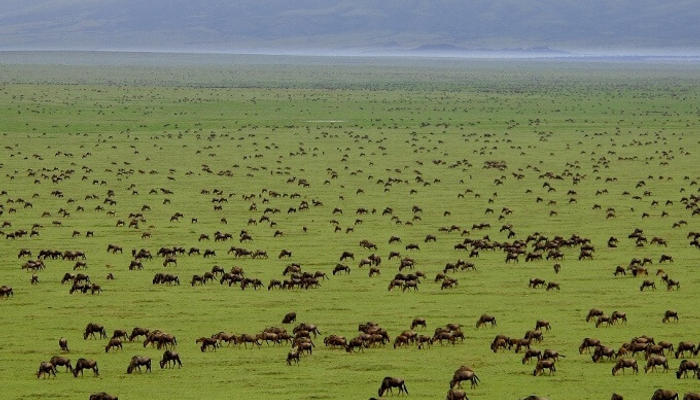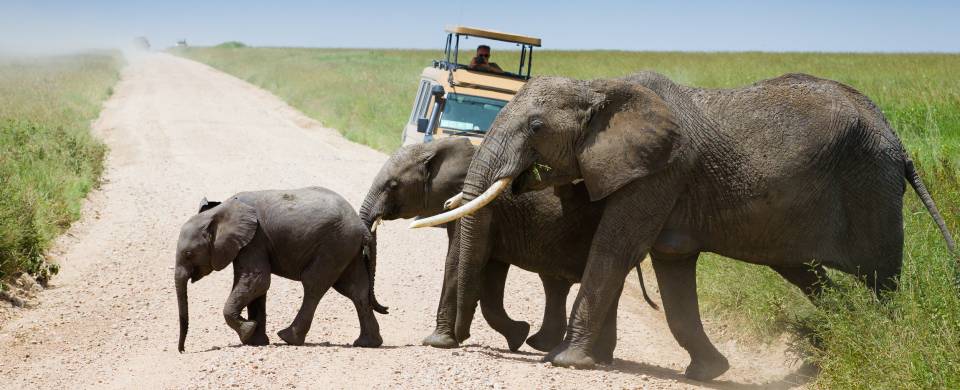History of Serengeti national park

History of Serengeti national park: Serengeti national park is the flag bearer of Tanzania safari destination and a very recognized national park on the African continent, Serengeti national park is located in the north region of Tanzania with its boundaries extending to the boundary of Tanzania and Kenya. Serengeti national park lies in the great Serengeti Mara ecosystem which is famous the great wildebeest migration which is the world largest mammal migration, in the great wildebeest migration thousands of wildebeests, gazelles, zebras and elands migrate to and from Serengeti national park from Masai Mara national reserve.
Serengeti national park covers an area of 14,750 square kilometers and its landscape is divided into two regions defined by the dominant vegetation that is woodland and grasslands. Woodland region of Serengeti national park are dominated by grasslands that are riverine, plains and derived grasslands. Woodlands region of Serengeti national park is dominated by acacia woodlands and terminalia which are dominant species.
Serengeti national park’s landscape is dotted by a number of granite and gneiss outcroppings famous known as Kopjes, kopjes are large rocky formations formed as a result of volcanic activity and the popular kopje is Simba kopje ideal for game viewing.

Serengeti national park is a home to a variety of wildlife and bird life species which make one of the best Tanzania destinations for Tanzania game viewing safaris and birding safaris. Animals in Serengeti national park include the big five with about 3000 lions, 5000 elephants, 1000 leopards, buffaloes and rhinos. There are also carnivores species in the park such as 225 cheetahs, 3500 spotted hyenas, 300 wildl dogs, African golden wolves, serval cats, honey badgers, 7 species of mongooses, 2 species of otters and many more. Other animals in Serengeti national park include yellow and olive baboons, monkeys, black and white colobus monkeys, giraffes, zebras, elands and many more.
- Serengeti national park is a home to a high concentration of birdlife with about 500 bird species thus being an ideal destination for Tanzania birding tours, birds in Serengeti national park include Black-headed Gonolek, Fischer’s lovebird, Green-backed woodpecker, Grey-backed fiscal, Grey-breasted spurfowl, Grey-crested helmet-shrike, Hildebrandt’s starling, Red-capped robin-chat, Rufous-tailed weaver, Rüppell’s vulture, Southern ground hornbill, Schalow’s turaco, Silverbird, Usambiro barbet, Verreaux’s eagle, Yellow-throated sandgrouse and many more
History of Serengeti national park
The area presently known as Serengeti national park was initially a residential and grazing area for the local Masai people, the masai people used the open plains of Serengeti national park for grazing their large herds of animals for over 200 years before the coming of the first European explorers in Tanzania who also visited the area. The grazing of livestock by the Masai Mara people was majorly done in the open plains of the eastern Mara Region, the name Serengeti comes from a Maasai slag ”siringet” meaning “the place where the land runs forever”
The first Europeans to visit the then Masai plains were Dr. Oscar Baumann a German geographer and explorer who entered the area in 1892, the first American to enter Serengeti national park was Stewart Edward White who arrived in 1913 and on his visit he recorded his explorations in the northern Serengeti. In 1920s, he returned to Serengeti national park and camped in the area around Seronera for about 3 months. Stewart Edward White and his companions during their stay of 3 months they shot 50 lions and because of their hunting sprees, the lions became scarce in the plains of Serengeti national park.
The decreasing number of lions in the plains of Serengeti national park prompted the British colonial masters who were the then rulers of Tanzania to gazette 800 acres of the game reserve, the gazette of the area was done in 1921 – 1929. The gazetting of the area as a game reserve laid foundations for the establishments of Serengeti national park which was actually established in 1951. Serengeti national park became the first and oldest national park to be established in Tanzania, the established Serengeti national park resulted into the eviction of the Masai people who used to graze their animals in the open plains of the park. The Masai people were evicted and resettled in the Ngorongoro Conservation Area a move which is still questioned for being a compulsive and deceptive by the British administrators. Currently the Masai People live in communities situated along the borders of Serengeti national park and they can still be visited, the eviction was intended to conserve and preserve the wildlife.
Serengeti national park gained fame as a safari destination and a national park following the initial work of Bernhard Grzimek and his son Michael who produced a book and a movie in the names of Serengeti Shall Not Die produced in 1950s. Their works is widely still recognized as one of the most important early pieces of nature conservation documentary.
Currently Serengeti national park is still the leading safari destination in Tanzania


